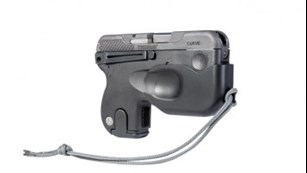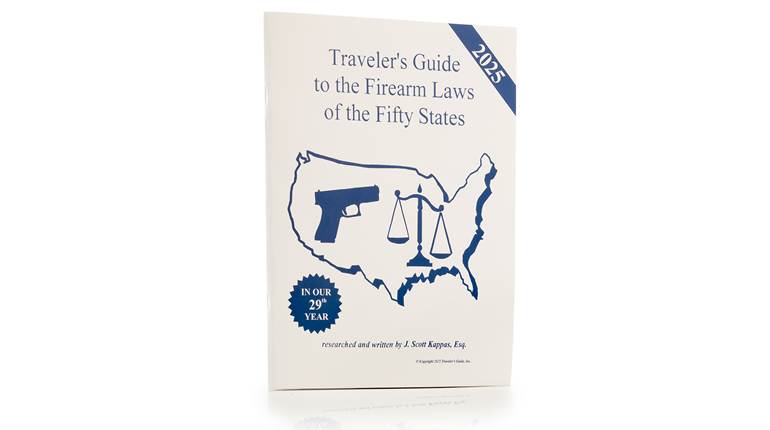
Change only comes when conventions are challenged. A couple of years ago I was pulled into a small, dark, poorly ventilated room in the back of Taurus' SHOT show booth. Then-company CEO Mark Kresser (since replaced) showed me a plastic mock-up (made, horrors, on a 3D printer, as that's what they are for) of what was revealed today as the Taurus Curve. It was a secret I kept until today, even though it was one of the firearm industry's most poorly kept secrets as the patents on this gun were taken out in Kresser's name. If you have access to a computer, you could have had a preview months ago simply by googling them.
 The thinking behind the Taurus curve is indeed outside the box. It is supposed to look that way; no one left it in the microwave too long. The idea of curving the frame of a handgun on a production firearm has been limited because the grip of the modern defensive handgun contains a pretty important component-the magazine. Anytime angles or arcs are introduced into feeding mechanism, there is the potential of increased friction and reduction of spring energy to present the cartridge to the chamber. When you have a spring that is trying to feed linear items, i.e., cartridges, at an angle or curve, there is more room for things to go wrong. That said, initial reports indicate the .380 ACP Curve feeds just fine. Taurus' engineers are quite good, though, and they appear to have overcome this issue on the Curve.
The thinking behind the Taurus curve is indeed outside the box. It is supposed to look that way; no one left it in the microwave too long. The idea of curving the frame of a handgun on a production firearm has been limited because the grip of the modern defensive handgun contains a pretty important component-the magazine. Anytime angles or arcs are introduced into feeding mechanism, there is the potential of increased friction and reduction of spring energy to present the cartridge to the chamber. When you have a spring that is trying to feed linear items, i.e., cartridges, at an angle or curve, there is more room for things to go wrong. That said, initial reports indicate the .380 ACP Curve feeds just fine. Taurus' engineers are quite good, though, and they appear to have overcome this issue on the Curve.
The Curve's concept is brilliant. By changing the shape of the handgun, it conforms to the curves of the hip, thigh or buttocks, and makes it less likely to be identified while concealed as, uh, a handgun. In many ways it reminds me of a combination Kimber Pepperblaster and the wallet that was used to contain a High Standard Derringer. The latter, by the way, was considered an Any Other Weapon by BATF because it was not readily identifiable as a firearm.
Sadly, due to other commitments, I was unable to attend the recent Taurus event in Miami during which the Curve was revealed to a select group of writers. Thankfully, one of that select group was Shooting Illustrated's Jay Grazio, who wrote about his experience with it. I had the opportunity to examine the gun first-hand yesterday, and to speak with Jay about how the gun performed on the range.
He said it fed and functioned just fine, and the laser unit allowed it to shoot as well as other pocket pistols in its class. Frankly, the part of the gun that I like the most is the integral module in front of front of the trigger guard that contains both a white light and a laser. That component was cleverly designed by LaserLyte. It was manufactured to fit into a specific space forward of the trigger guard and come in at a very specific and competitive price. And you don't need to disassemble the gun or ship it back to the factory to change the battery.
The Curve has the LaserLyte as its primary sight. Unlike the mock up I saw previously, there are no iron sights. Just lines in white on the back of the slide. There is no provision for adding sights, and there is no groove on the slide's top like on an AMT Back Up. The little gun weighs just more than 10 ozs., and has a six-round capacity detachable box magazine with its release on the either side of its base. Remember pinching both sides of the S&W .380 Sigma's magazine and pulling down? It works kind of like that.
Taurus decided to try and change the carry culture with the Curve, and it is an innovative solution. Essentially, there is a springy, polymer trigger guard and muzzle cover that merely snaps over the muzzle and protects the trigger (which is a long double-action-only with no restrike). On its a base is a lanyard that can be hooked over the belt. There is a spring clip on the gun's right side that allows it to go on the waistband. Simply draw the gun, and the lanyard retains the cover as the Curve is presented. Again, this is an ingenious and unorthodox solution. The question in my mind is does it add value to those looking for a concealed-carry gun? Will the culture change to the Curve's intended method of carry, or will the Curve be carried as pocket pistols have been conventionally carried-in a pocket holster? Or even better, drop it into a Sneaky Pete belt holster. At this time I don't know, but I intend to spend some time on the range with the Curve, and I will report on its performance at a later time.





































